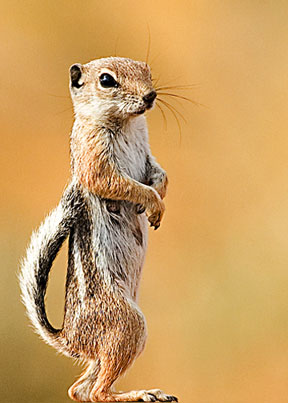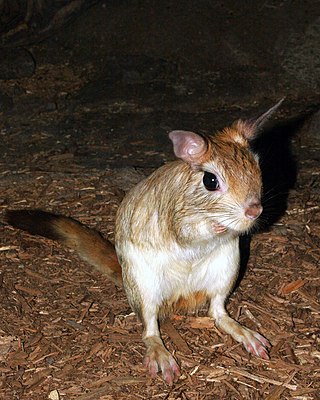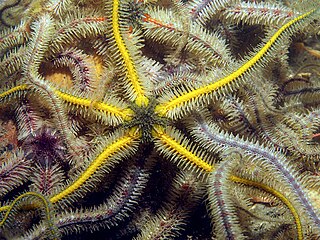
The Tyranni (suboscines) are a suborder of passerine birds that includes more than 1,000 species, the large majority of which are South American. It is named after the type genus Tyrannus. These have a different anatomy of the syrinx musculature than the oscines, hence the common name of suboscines.

The Mygalomorphae, or mygalomorphs, are an infraorder of spiders, and comprise one of three major groups of living spiders with over 3,000 species, found on all continents except Antarctica. Many members are known as trapdoor spiders due to their creation of trapdoors over their burrows. Other prominent groups include Australian funnel web spiders and tarantulas, with the latter accounting for around one third of all mygalomorphs.

Brittle stars, serpent stars, or ophiuroids are echinoderms in the class Ophiuroidea, closely related to starfish. They crawl across the sea floor using their flexible arms for locomotion. The ophiuroids generally have five long, slender, whip-like arms which may reach up to 60 cm (24 in) in length on the largest specimens.

Sciuromorpha ( 'squirrel-like') is a rodent clade that includes several rodent families. It includes all members of the Sciuridae as well as the mountain beaver species.

Spider taxonomy is the part of taxonomy that is concerned with the science of naming, defining and classifying all spiders, members of the Araneae order of the arthropod class Arachnida, which has more than 48,500 described species. However, there are likely many species that have escaped the human eye as well as specimens stored in collections waiting to be described and classified. It is estimated that only one-third to one half of the total number of existing species have been described.

Stylommatophora is an order of air-breathing land snails and slugs, terrestrial pulmonate gastropod molluscs. This taxon includes most land snails and slugs. Stylommatophorans lack an operculum, but some close their shell apertures with temporary "operculum" (epiphragm) made of calcified mucus. They have two pairs of retractile tentacles, the upper pair of which bears eyes on the tentacle tips. All stylommatophorans are hermaphrodites.

Anomaluromorpha is a clade that unites the anomalures, springhares, and zenkerella. It has alternately been designated as either a suborder or infraorder. Most recently, Carleton & Musser 2005 recognized it as one of five suborders of rodents.

Cicadomorpha is an infraorder of the insect order Hemiptera which contains the cicadas, leafhoppers, treehoppers, and spittlebugs. There are approximately 35,000 described species worldwide. Distributed worldwide, all members of this group are plant-feeders, and many produce either audible sounds or substrate vibrations as a form of communication. The earliest fossils of cicadomorphs first appear during the Late Permian. Notable extinct members include the "giant cicadas" belonging to Palaeontinidae.

The Tubulinea are a major grouping of Amoebozoa, including most of the more familiar amoebae genera like Amoeba, Arcella, Difflugia and Hartmannella.

The Ophiurida are an order of echinoderms within the class Ophiuroidea. It includes the vast majority of living brittle stars.

The Gnathophiurina are a group of Ophiuroidea mostly treated as suborder.

Amphiuridae are a large family of brittle stars of the suborder Gnathophiurina. Some species are used to study echinoderm development and bioluminescence.

The Euryalina are a suborder of brittle stars, which includes large species with either branching arms or long and curling arms. It is sometimes listed as the order Euryalida.
Ophiocanops fugiens is a living species in the brittle star family Ophiocanopidae. Though once considered to be the only one living species in this brittle star family, recent research has brought to light three specimens of Ophiocanops that differ substantially from O. fugiens. It has been regarded as the most primitive brittle star, close to Paleozoic forms, though other authors have disagreed with the view. Classification of O. fugiens is highly argued. Ophiocanops is usually placed in the order Oegophiurida or regarded as a genus incertae sedis or even given its own subclass Oegophiuridea. Some recent data suggest its relationship to the extant family Ophiomyxidae.

Ophionereididae are a family of brittle stars.

Ophiocomidae are a family of brittle stars of the suborder Ophiurina.

Ophiothrix is a large genus of brittle stars (Ophiuroidea) found in oceans worldwide from tropics to Arctic and Antarctic regions. At present a total of 93 Ophiothrix species have been recognized. It is considered as one of the most interesting genera because of the presence of its brilliant colors and associations with coral and sponges as well. This genus has been labelled particularly difficult with respect to taxonomy, due to a high degree of variability in characters that are described is a morphological aspect.

Neodermaptera, sometimes called Catadermaptera, is a suborder of earwigs in the order Dermaptera. There are more than 2,000 described species in Neodermaptera.

Ophiomusa is a genus of echinoderms belonging to the family Ophiolepididae that includes: sea urchins, sand dollars and sea cucumbers. Ophiurida are similar to starfish; they both have a central disc and five arms sprouting from the disc. One of the main distinguishing factors of an Ophiuroid is its arms; the arms of an Ophiurida are longer, thinner, and distinctly separated in comparison to those of a sea star.

















